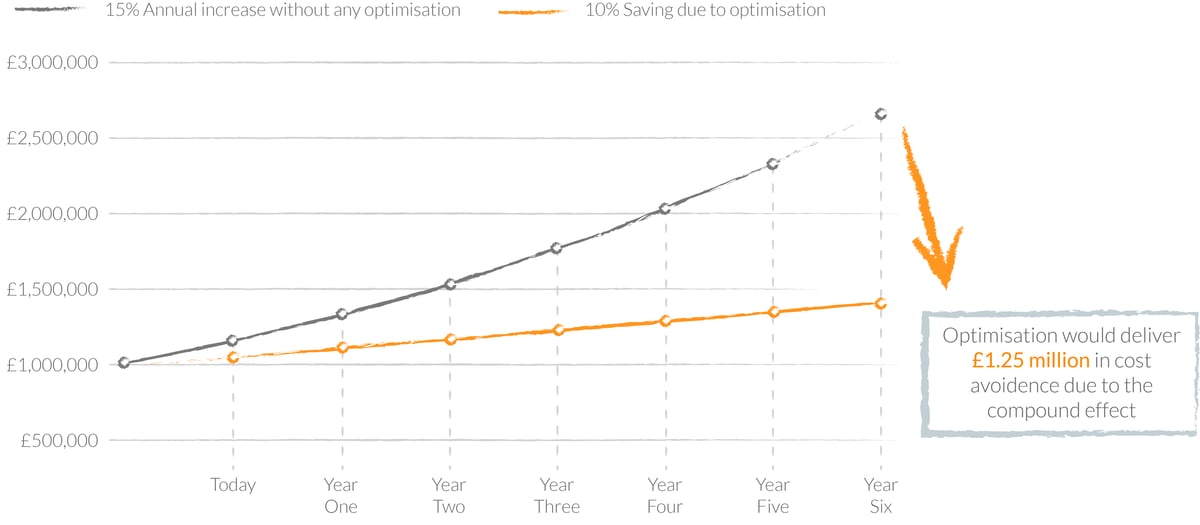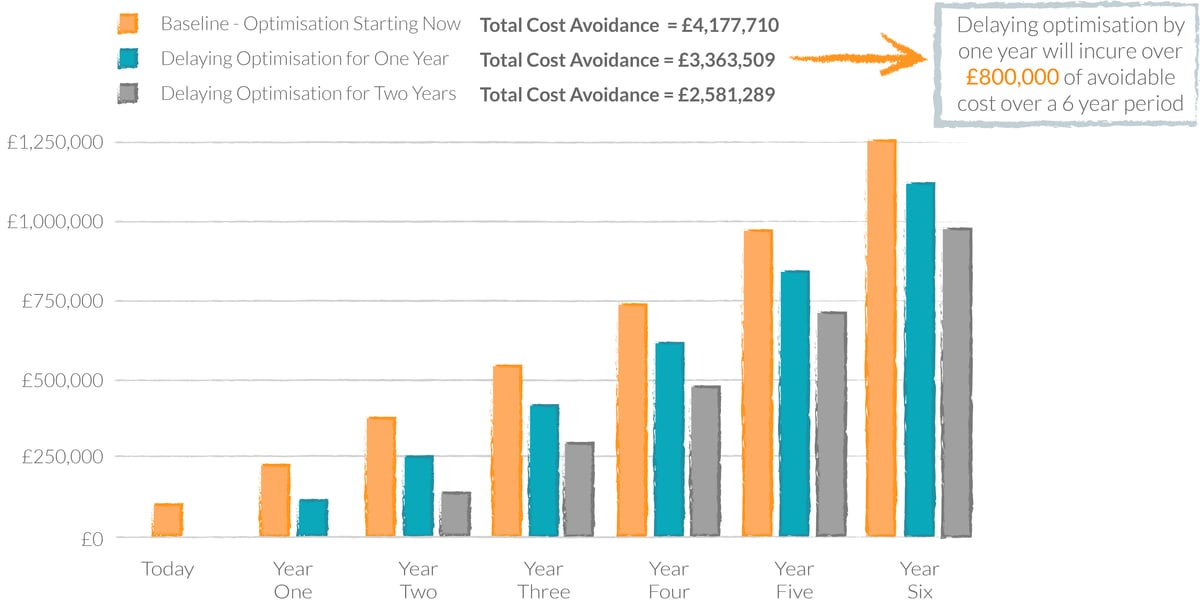1st August 2023

Many companies have embraced SaaS based licensing models because of their convenience and benefits. However, these models also pose a challenge: how to control the cumulative cost. Small cost increases may seem manageable at first, but over time, they add up to a significant financial burden.
If you use SaaS products in your business, you will have noticed your subscription fees increase over time. There are two main reasons for this:
These cost increases may seem modest in isolation, but SaaS costs quickly add up and eat into your budget when compounded over time. While not much can be done about vendor price increases, companies can exercise control over change-driven increases. By adopting proactive optimisation practices it is possible to mitigate the cumulative impact of subscription licensing models.
Discover more about the Microsoft Global Price Increase and what it means for you >
Active license optimisation practices are vital in identifying and eliminating unnecessary expenses. A continuous approach to identifying underutilised or surplus licenses allows for quick action to be taken to optimise usage and eliminate unnecessary expenses.
By continuously assessing and fine-tuning the allocation of licenses based on how they are being used, companies can maintain complete control of their SaaS estate. Avoiding unnecessary costs both immediately and in subsequent years.
By actively avoiding these costs, organisations can achieve a greater return on their software investment and allocate their resources with confidence.
The below graph illustrates the impact of optimisation vs the cumulative cost of SaaS Licenses. The example assumes of a compounding effect of a 15% price increase year on year on an annual spend of £1,000,000 (7.5% due to vendor rise and 7.5% attributed to organisational change), with optimisation achieving a modest 10% reduction of costs.
NB. The average employee churn rate for a UK organisation in 2022 was 15%.

When considering optimisation, both the actions you take and when you take them are important. The following graph illustrates the impact of postponing optimisation activities on your ability to handle accumulating costs.

In the ever-evolving landscape of SaaS licensing, organisations cannot ignore the impact of cumulative costs. It’s essential to adopt an active optimisation strategy to maintain tight control of costs and mitigate the cumulative impact of cost increases. By doing so, they can successfully and swiftly navigate the challenges of organisational change and strategically manage rising subscription costs to ensure optimised investments for the future.
Take back control today. Don’t allow the costs of your SaaS subscriptions to escalate and become a burden on your budget. Adopt active optimisation practices and eliminate your software waste now and in the future.
Discover Hublsoft SaaS Optimisation today.
©Hublsoft 2025, All Rights Reserved
Hublsoft Limited is a company registered in England and Wales, with company number 11869832 and VAT number GB 356290095
Registered Office Address - The Catalyst, Baird Lane, York, England. YO10 5GA